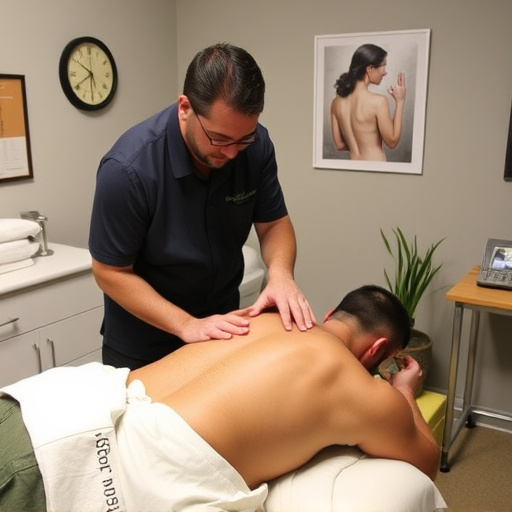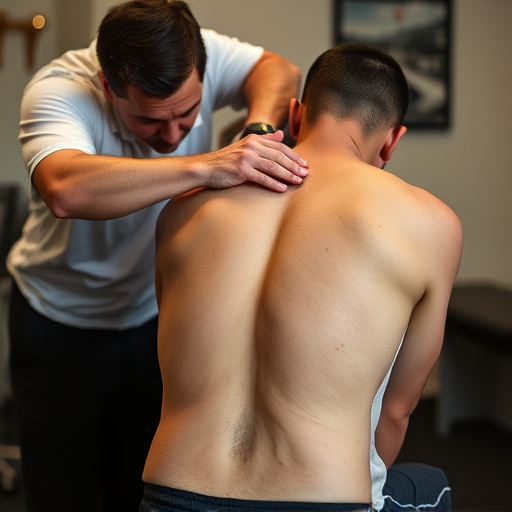Spine injury workers comp claims are complex, impacting work time and potential disabilities. The process involves medical assessments, rehab planning, and legal negotiations. Early intervention with non-invasive treatments like physical therapy aids recovery and mobility. Ergonomics, focusing on posture, equipment use, and lifting techniques, prevent workplace injuries and facilitate rehab, emphasizing safe return to work.
Workplace ergonomics play a pivotal role in preventing spine injuries, especially among individuals navigating spine injury workers comp claims. This article delves into the intricate world of ergonomic advice from experts specializing in these complex cases. We explore common mistakes that lead to workplace injuries and present strategies to foster a safer environment. Understanding how to mitigate risks is crucial for employers and employees alike to manage and prevent spine-related incidents, offering valuable insights for those involved in workers comp claims.
- Understanding Spine Injury Workers Comp Claims
- Common Workplace Ergonomics Errors Leading to Injuries
- Expert Strategies for Preventing and Managing Spine Injuries at Work
Understanding Spine Injury Workers Comp Claims

Understanding spine injury workers comp claims is crucial for both employees and employers. When a worker sustains a spine injury on the job, it often leads to significant time away from work and can result in long-term disabilities. These claims are complex due to the potential impact on an individual’s ability to perform daily tasks and return to their pre-injury level of functionality. The process involves medical assessments, rehabilitation planning, and legal negotiations to determine liability and compensation.
Workers comp experts emphasize that early intervention is key in managing spine injuries. A personal injury chiropractic approach focusing on non-invasive treatment methods can offer sciatica relief and aid in a faster recovery. This may include physical therapy, specialized exercises, and manual adjustments to alleviate pain and improve mobility. By proactively addressing these claims, employers can foster a safer work environment and support employees’ journey towards healing and returning to their roles.
Common Workplace Ergonomics Errors Leading to Injuries

Many workplace injuries, including those leading to spine injury workers comp claims, are often a result of common ergonomics errors. One of the most frequent mistakes is neglecting proper posture during prolonged sitting or standing. Workers may slouch over desks, lean on awkward angles, or stand for extended periods without support, all of which can strain the spine and lead to injuries. Another prevalent issue is the improper use (or lack thereof) of ergonomic equipment. This includes not utilizing adjustable desks, chairs with adequate lumbar support, or keyboard and mouse supports, which are designed to reduce stress on the body.
Overly heavy lifting or improperly handling objects also contributes to workplace injuries. Workers should be trained in correct lifting techniques, such as bending at the knees, keeping the back straight, and using their leg muscles for lifting. Additionally, frequent repetitive motions, like typing or scanning documents for extended periods, can cause strain on the upper body, leading to conditions like sciatica or whiplash treatment needs. Post-accident rehabilitation often emphasizes these core concepts to prevent further damage and promote recovery in a workplace setting.
Expert Strategies for Preventing and Managing Spine Injuries at Work

Workplace ergonomics play a pivotal role in preventing and managing spine injuries, as highlighted by experts in spine injury workers comp claims. One of the key strategies is to encourage proper posture during work activities. This involves ensuring that workstations are adjusted to each employee’s needs, including chair height, desk position, and monitor placement. A well-designed workstation can significantly reduce strain on the back and neck, minimizing the risk of injuries such as herniated discs or whiplash treatment needs.
Additionally, regular breaks and stretching exercises are essential components of a comprehensive ergonomics program. Many workplace injuries occur due to prolonged static positions, leading to muscle tension and fatigue. Implementing break schedules that include short periods of rest and active movement can help workers maintain their body’s natural range of motion. Post accident rehabilitation techniques, focusing on pain management and strengthening exercises, can also be integrated into the workplace to support employees who have already experienced spine-related injuries.
Ergonomics play a pivotal role in preventing and managing spine injuries among workers. By understanding common workplace errors and implementing expert strategies, organizations can significantly reduce the risk of these debilitating injuries. When it comes to spine injury workers comp claims, proactive measures and a culture of safety are key. With the right adjustments to workstation design, task performance, and employee training, businesses can foster a healthier work environment and protect their most valuable asset—their employees.














